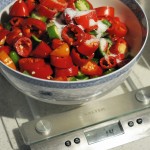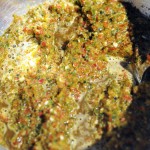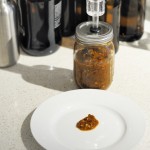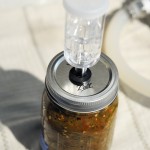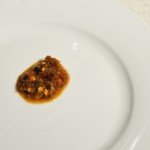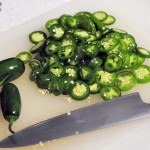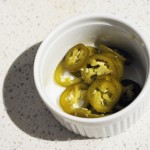It’s easy to forget the magic that lactic fermentation imbues upon some of our favorite foods. In particular, a wide variety of condiments are transformed through the alchemy of fermentation. Sriracha hot sauce? Fermented. Tabasco? Fermented (for years). Soy sauce, fish sauce, many types of chili paste? All fermented. When you start looking at the various sauces and pickles we love, you soon realize that most have their roots firmly grounded in the world of preservation and fermentation.
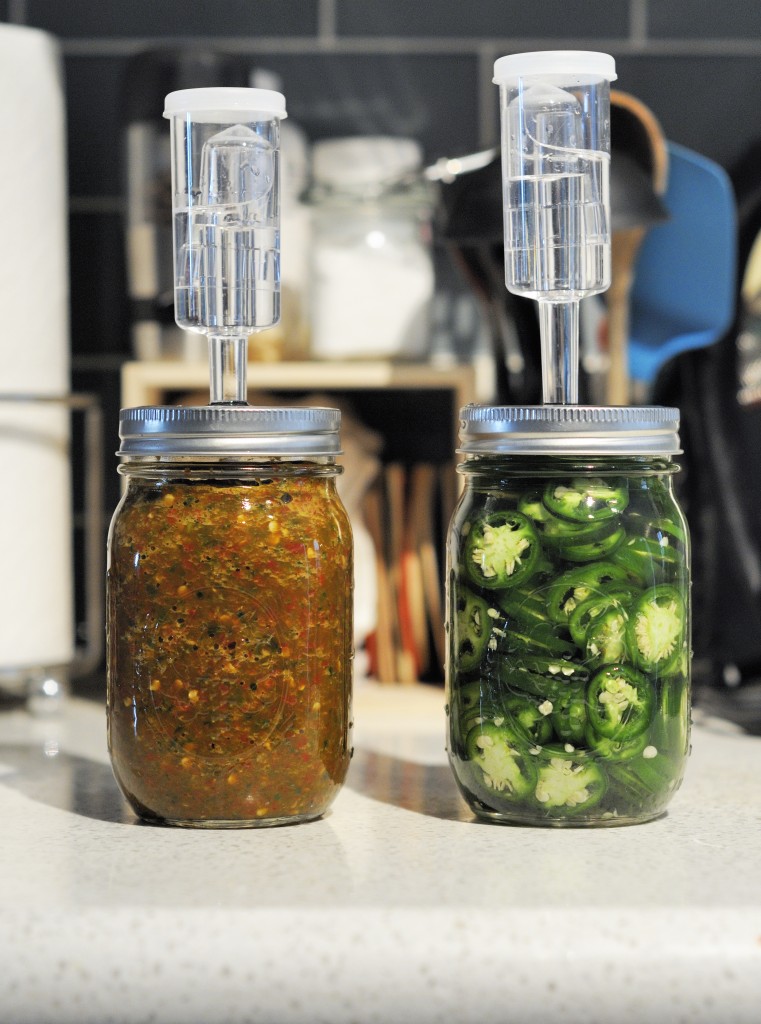
Jalapeno slices and chili paste ready to be transformed through fermentation. Modifying mason jars with rubber grommets and airlocks is a cheap and easy way to prevent any undesired growth in your ferment.
Chilies are an excellent candidate to preserve via fermentation. As summer starts to become a memory and fall begins to whisper in our ears, the local NYC farmers markets begin to be filled with a variety of locally grown chilies. I’m a major fan of hot food, so my natural inclination is to capture as many of these fresh chilies as possible and preserve them for use throughout the winter. Chili paste and fermented jalepeno slices are an excellent means to do this.
Fermented Chili Paste
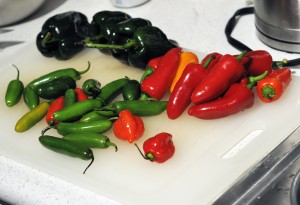
My chili paste consists of a blend of jalapenos, serranos, poblanos, and habaneros. Striking the right blend is key to obtaining your preferred heat level.
Fermented chili paste is not only a great condiment, but also a versatile addition to many recipes. It’s great because you can make it with any blend of peppers you wish, resulting in either a fruity/tangy sauce, or one that will burn off your taste buds. I ended up shooting for something in between the two. Using a blend of sweet and hot peppers will strike a nice balance. There really is no right or wrong blend. I like to add an entire head of garlic to the mix for a nice garlicky kick. Really the only rule I stick to is to include 2% by weight kosher salt. For example, if I have 500 grams of raw chopped up peppers, I’ll include 10 grams of kosher salt in the mix. This level of salt is key to encouraging good bacteria growth while inhibiting molds or other undesired microbiological activity.
- Peppers are roughly chopped and weighed. 2% salt by weight is added to the mix.
- The pepper, garlic, and salt mixture is run through a food processor to form a ‘pepper mash’.
- The mix is allowed to fermented for about 3-4 weeks at ambient room temperatures. Taste frequently as it will continue to grow acidic. Once it is to your preferred taste, place in the refrigerator to slow down any further fermentation.
- The easiest way to prevent unwanted growth in your ferment is to provide an anaerobic (oxygen free) environment. To do this, I’ve drilled holes into standard mason jar lids, fitted it out with a standard rubber grommit from the homebrew store, and then sealed it with an airlock.
- The fermented chili paste picks up a nice piquant acidic tang. The heat is present, but complimented by a great fruity pepper flavor.
Fermented Jalapeno Slices
Another great way to preserve chilies is fermenting slices in a brine solution. The recipe couldn’t be easier. For this batch I sliced enough jalapenos to pack a pint sized mason jar to the brim. I then topped the jar with a brine solution consisting of filtered water and 5-6% by weight kosher salt. The mason jar was fitted with a lid and airlock and allowed to ferment for approximately a week. Again, taste should be your guide. Once the peppers fit your taste, refrigerator to slow further fermentation.
The pepper rings will take on a lovely tart acidic quality as well as some earthy funk. Texturally they retain a nice snap and are a great topping to many dishes.
- Jalapenos are sliced into rings. Wearing gloves is highly recommended.
- After the pepper rings are fermented, they’ll become a deeper olive color.
A Few Words About Safety
- Smell and looks should be your guide. I don’t eat anything that grows mold or smells off.
- Wear gloves when handling chilies. The oils can and will burn you.
- Be careful when sealing ferments. Fermentation can produce CO2 gas. If this builds up in a sealed container, it can result in dangerous levels of pressure, which can cause vessels to burst. Frequently vent any sealed ferments, or ferment with an airlock.

